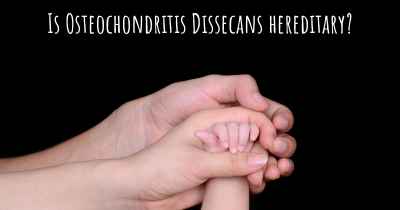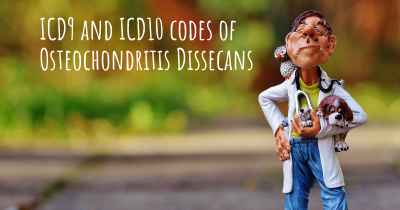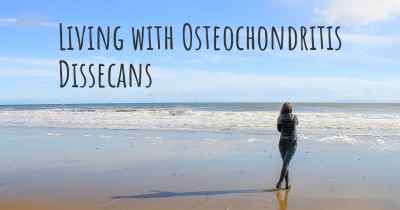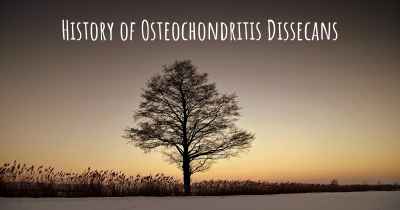What is the life expectancy of someone with Osteochondritis Dissecans?
Life expectancy of people with Osteochondritis Dissecans and recent progresses and researches in Osteochondritis Dissecans
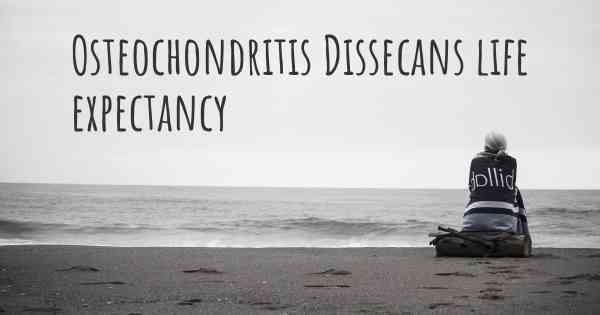
Osteochondritis Dissecans (OCD) is a condition where a piece of bone and cartilage separates from the joint surface, causing pain and limited mobility. The life expectancy of someone with OCD is not directly affected by the condition itself. However, the prognosis depends on various factors such as the affected joint, severity of the lesion, age, and overall health of the individual. Early diagnosis and appropriate treatment can significantly improve outcomes. Treatment options may include rest, physical therapy, medication, and in some cases, surgery. It is crucial for individuals with OCD to work closely with healthcare professionals to manage symptoms and maintain joint health for a fulfilling and active life.
Osteochondritis Dissecans (OCD) is a condition that affects the joints, particularly the knee, ankle, and elbow. It occurs when a small piece of bone and cartilage separates from the joint surface, leading to pain, swelling, and limited mobility. The prognosis and life expectancy for individuals with OCD can vary depending on various factors, including the severity of the condition, the affected joint, and the treatment received.
Severity of the Condition: The severity of OCD can range from mild to severe, with different implications for life expectancy. In mild cases, where the affected joint is stable and symptoms are manageable, individuals can lead relatively normal lives with appropriate treatment and lifestyle modifications. However, in severe cases where the joint is significantly damaged and symptoms are debilitating, the impact on life expectancy may be more significant.
Affected Joint: The joint affected by OCD can also influence the prognosis. The knee is the most commonly affected joint, followed by the ankle and elbow. The knee joint has a higher capacity for surgical intervention and rehabilitation, which can improve outcomes and potentially extend life expectancy. On the other hand, OCD in the ankle or elbow may present more challenges in terms of treatment options and long-term management.
Treatment Options: The treatment approach plays a crucial role in determining the prognosis for individuals with OCD. The primary goal of treatment is to restore joint function, alleviate pain, and prevent further damage. The treatment plan may include a combination of non-surgical interventions such as rest, physical therapy, pain management, and lifestyle modifications. In more severe cases or when conservative measures fail, surgical options like arthroscopy, drilling, or cartilage transplantation may be considered.
Prognosis and Life Expectancy: It is important to note that OCD itself is not a life-threatening condition. However, the impact on life expectancy can be influenced by several factors. When managed effectively, individuals with OCD can lead fulfilling lives with minimal limitations. With appropriate treatment and adherence to recommended lifestyle modifications, the progression of the condition can be slowed or even halted, allowing individuals to maintain joint function and quality of life.
However, in cases where OCD is severe, and joint damage is extensive, the long-term prognosis may be less favorable. Complications such as chronic pain, joint instability, and early-onset osteoarthritis can arise, potentially impacting life expectancy. Additionally, the presence of other underlying health conditions or complications can further influence the overall prognosis.
Conclusion: While it is challenging to provide a specific life expectancy for individuals with Osteochondritis Dissecans, it is crucial to focus on effective management and treatment to optimize outcomes. Early diagnosis, appropriate medical interventions, and lifestyle modifications can significantly improve joint function, reduce pain, and enhance quality of life. Regular follow-up with healthcare professionals, adherence to treatment plans, and maintaining a healthy lifestyle are essential for individuals with OCD to lead fulfilling lives.

